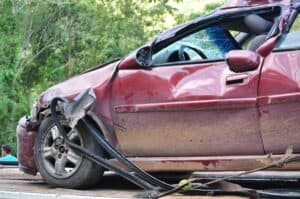
A car accident, even a fender bender, can turn your life topsy-turvy in a moment. Shock and adrenaline can jumble your thinking, yet in the initial minutes, what you do can keep you safe, get you out of trouble with the police, and influence your insurance claim. As the traffic law evolves and more and more technology is integrated, being prepared in 2025 is nailing these first steps, especially if you’re driving on roads.
Always Stop and Check for Injuries First
Your safety and the safety of everyone involved should be your first concern. As indicated by the Traffic Act, one should stop the vehicle at the scene.
Look for Injuries: Check yourself and other passengers for injuries. You might look fine, but pain can be hidden by adrenaline. Unless in a danger position do not move anyone who is seriously injured. Call for emergency medical assistance right away. Getting early medical attention is not just a health consideration, but also for the sake of getting injuries officially documented in case of any future claim.
Report to the Authorities and Document
It is likewise legally required to report to the authorities, especially when there is injury or considerable damage to property.
Report to the Police: Call 999 or 112 and inform the police about the accident. Even for minor accidents, a police abstract is required to claim insurance. In case the police cannot reach the site, you should report the accident at the nearby police station and get the abstract.
Dramatize the Scene in Full: After it is safe to do so, take as much information as possible. Take clear, good-quality photos and videos from several different angles, taking:
- Pictures of all the vehicles in the crash.
- All license plates on all the vehicles.
Overall view of the accident site, road surface, skid marks, signs, and any other wreckage that needs to be documented.
- Evidence of apparent injury.
Exchange Information: Provide contact details to the other party:
- Name and phone numbers.
- Driver’s license number.
- Vehicle number plate, make, and model.
- Insurance company and policy numbers.
Do not apologize or discuss liability at the accident scene. Report facts. If there are any witnesses, ask for their names and numbers politely.
Inform Your Insurance Company in a Timely Manner
Notify Your Insurer: Call your agent or insurer as quickly as possible and let them know about the accident. Give them the minimum: date, time, place, and a brief explanation of how it occurred.
Know Your Policy: Understand your policy’s clear explanation of claim reporting mechanisms and what they will need from you. These typically include the police abstract, completed claim form filled in properly, photocopies of logbook and driver’s license, and photos of the damage.
Take Instructions: Your insurer will guide you on the best course of action, for example, asking for a vehicle inspection from a loss assessor.
Consult a Doctor and Record the Facts
Even if you do not immediately feel injured, it is a good idea to have a medical checkup.
Medico-Legal Examination: Adrenaline will delay pain, and it will not be found immediately if you suffer from whiplash or internal injuries. Your case can be assessed by a doctor properly.
P3 Form: If you have been injured, ensure that you get a police P3 form from the police and have it filled in by a police doctor, noting your injuries. This is obligatory for all personal injury claims.
Record All Expenses: Record all your medical bills, receipts for medication, travel to and from doctor’s visits, and lost income from not being able to work. These are utilized in calculating special damages for your claim.
Final Thoughts
By taking all the essential steps soon after an automobile collision, you will protect yourself from harm not only are you protecting yourself from harm, you’re putting yourself squarely in good position for any court case or insurance claim down the road, so you can weather the difficult aftermath with the least amount of difficulty